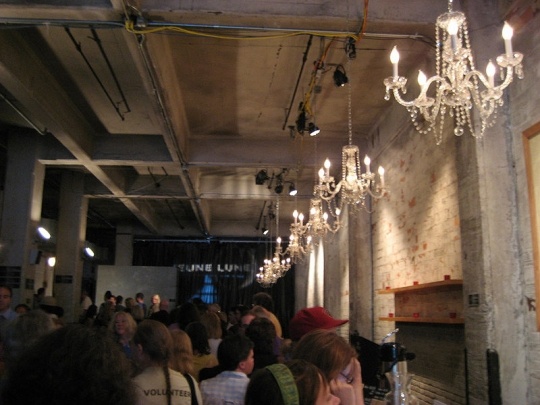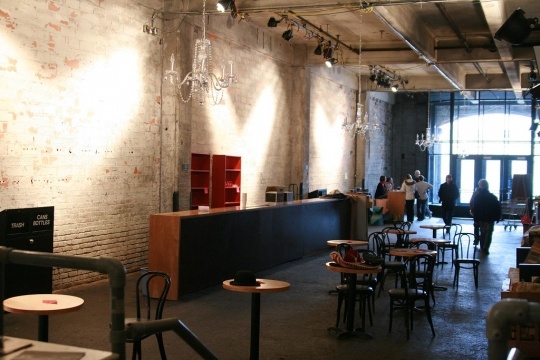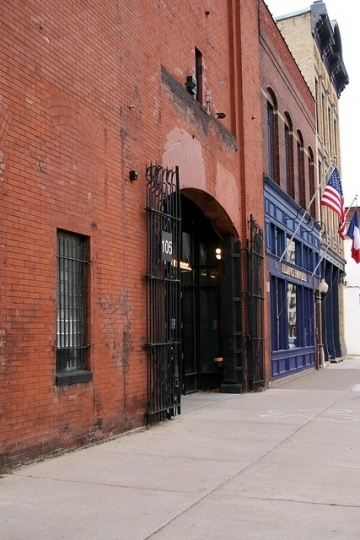Theatre de la Jeune Lune was a theater company formed in 1978 in Paris by Dominique Serrand, Barbra Berlovitz, and Vincent Gracieux, all of whom studied at the École Internationale de Théâtre with Jacques Lecoq. In 1985 it moved to Minneapolis, where it grew to include actor and co-artistic director Steven Epp. The company was renowned for its ensemble work and experimental plays and won a Tony Award for best regional theater in 2005. After the economic recession of 2008, it found itself in debt and was forced to close.
From the Guthrie to Mixed Blood, the Twin Cities have been home to a vibrant theater scene since the 1960s. One contributor to that reputation, Theatre de la Jeune Lune, was founded in 1978 by Dominique Serrand, Barbra Berlovitz, and Vincent Gracieux. They came together in Paris, where they had studied at the École Internationale de Théâtre with Jacques Lecoq. In English, the company’s name means Theater of the New Moon, a phrase inspired by the Bertolt Brecht poem “Looking for the New and the Old.” In a program for the company’s production of Deception, Serrand wrote that the company was “always looking to reinvent our art for our audience and ourselves.”
Even while it was based in Paris, Theatre de la Jeune Lune toured cities in the United States—especially Minneapolis, Berlovitz’s hometown. With this exposure and the company’s experimental nature, it did not take long for Jeune Lune to gain attention. Steve Epp, who became a co-artistic director in 1983, remembered going to the company’s second show in Minneapolis and deciding “they were the new, hot thing in town.” Seeing it made him think, “That’s it...that’s theater.”
Theatre de la Jeune Lune expanded under Epp’s leadership. It moved to Minneapolis in 1985 and continued to experiment with theatrical forms. “We kept evolving, and that really is why we kept lasting,” said Epp. In this era, the company was known for its physicality, producing shows with minimal text. One of Jeune Lune’s first productions was Yang Zen Frogs, a vaudeville act set in a café where anything could happen. “We had no idea what we were making,” Epp recalled. “We were just doing stuff that we had never done before that we weren’t seeing anybody else doing at that time...it became an enormous hit.”
The next step in Jeune Lune’s evolution was the purchase of a permanent performance space. This enabled the company to experiment with more dialogue-heavy shows, such as Children of Paradise (its premiere in the First Street space). “It was the biggest show we had ever done at that point…and it got us a lot of national attention,” said Epp. Theatre de la Jeune Lune continued to evolve, eventually staging operas like Don Juan Giovanni and The Magic Flute. It drew national attention in 2005, when it received a Regional Theatre Tony Award.
In spite of critical acclaim for Theatre de la Jeune Lune, the company struggled economically. “It always felt like we were living in peril, financially,” Epp recalled. The company found itself with massive debt that continued to grow. The public speculated that the expense of the permanent space was to blame, but according to Epp, the company “owned the building, which kept us alive.” It survived in this era by staging minimalist, relatively inexpensive shows.
In the mid-2000s, Jeune Lune staff organized a capital campaign to ease their debt, but they found little support while competing with similar fundraising campaigns by other theater companies. Many members left to work elsewhere, and in 2008, Jeune Lune declared bankruptcy and closed.
In the 2020s, Theatre de la Jeune Lune is remembered by theater goers around the world, especially in Minneapolis. A few years after it closed, Serrand, Epp, and Nathan Keepers founded a new venture: The Moving Company.







